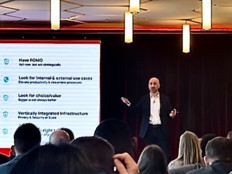Regulation, Multicloud and Finance: An Emerging Triangle
Financial services have long faced regulatory measures, particularly since the financial crisis of 2008. Basel III, an international framework developed in response to that era, brings updates to regulatory guidelines that are projected to prompt “dramatic changes to the current U.S. risk-based capital framework,” according to EY. Regional and small banks may face even more pressure, Deloitte notes.
The increased regulatory scrutiny means increased attention paid to infrastructure. Financial services companies need to demonstrate that their approach to the cloud accounts for data protection, customer privacy, operational resilience, maintaining transactional integrity and reporting.
A 2023 EY report indicates that most jurisdictions do not yet have cloud-specific regulatory requirements. That’s changing rapidly, however, and the same report points out that the regulatory landscape is increasing in complexity.
RELATED: The financial solutions and services that can help your business.
For example, FINRA, the Financial Industry Regulatory Authority, has weighed in on brokerages’ agility in the cloud space: “Firms may wish to consider whether multi-cloud or hybrid cloud options are compatible with their business needs. Alternatively, they may wish to consider adoption of an exit strategy to mitigate against an unfavorable lock-in scenario.”
Forbes notes that regulators are taking a closer look at the risks of cloud use, including the financial industry’s tendency to use third-party service providers, forcing IT leaders to carefully balance regulatory needs against the advantages of additional cloud partnerships.
But those third-party providers also reveal why a multicloud approach can support financial services in this regulatory environment.
Why a Multicloud Strategy Is a Tremendous Regulatory Win
Risk management is a key part of financial organizations’ business practices, and using multiple cloud service providers can be considered a good strategy for managing risk, Forrester states in a 2022 article. By using multiple providers, financial organizations deepen their bench of capabilities. The practice grants them the “strategic agility and operational resilience” that EY points to as a critical part of navigating regulatory policy.
DISCOVER: Achieve a hybrid IT infrastructure with a multi-cloud strategy.
It also gives them the exit strategy FINRA suggests institutions have and allows organizations to provide continual service to customers even amid complex compliance audits. Such audits go more smoothly when businesses use centralized monitoring for their multicloud environments (especially via a cloud management service), granting auditors visibility into the full cloud system.
Partnering with multiple cloud providers can assure financial organizations that they’re using the best capabilities from each provider. Working with a cloud management service can help corral these capabilities so that financial institutions can focus on their mission-critical IT needs, though Forrester reports that FinOps leaders are developing standardization and portability between cloud providers, regardless of management service.
Cloud providers often develop products designed to integrate with hyperscalers. Red Hat, for example, touts its ability to support Microsoft Azure, Amazon Web Services, Google Cloud and IBM, which offers a specific cloud for financial services. Nutanix offers the type of business continuity that financial services customers — and regulators — insist on from the sector.
Regulatory support isn’t the main reason that financial institutions are leaning into the cloud. But it’s a good reason for them to keep doing so in 2024 and beyond.










